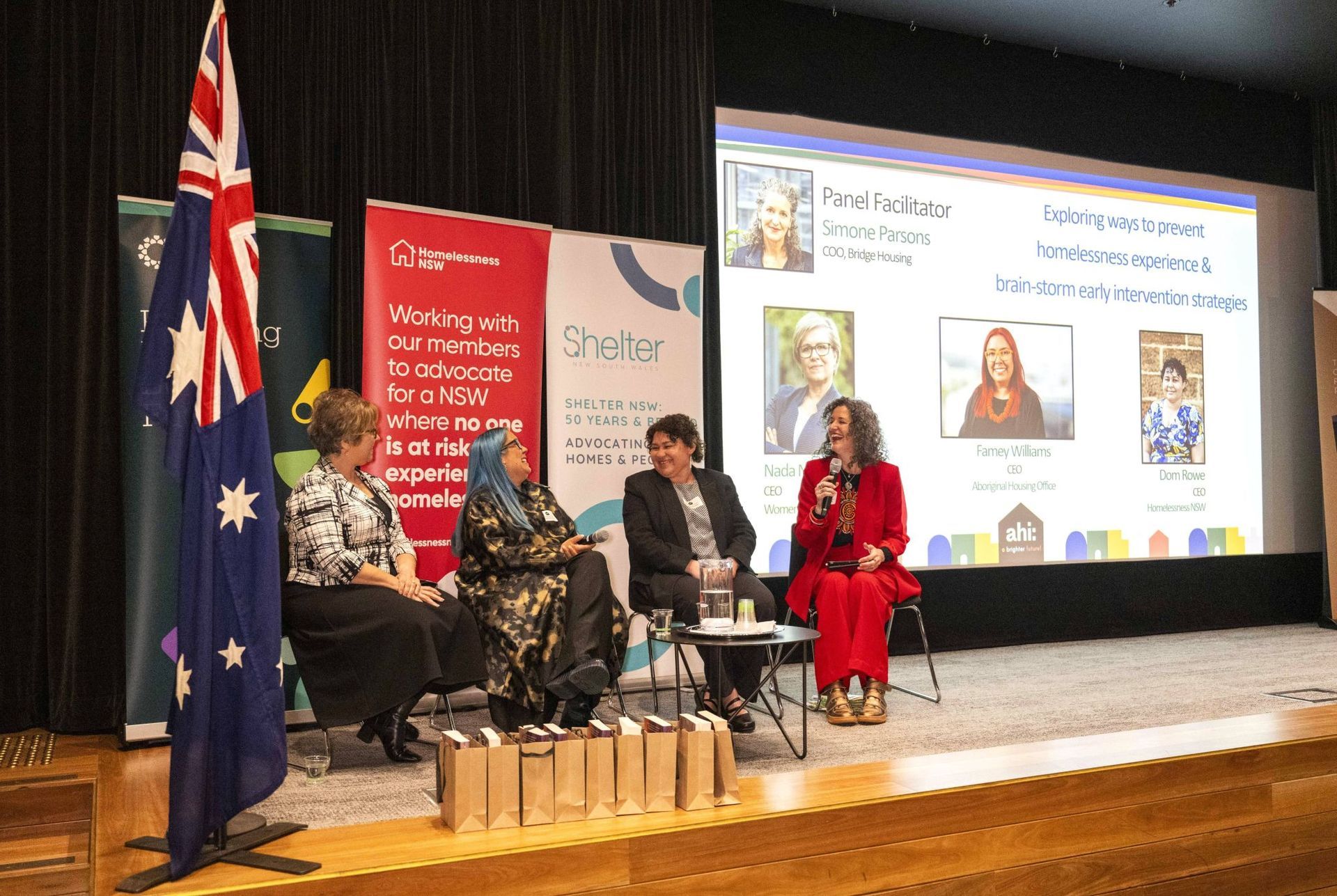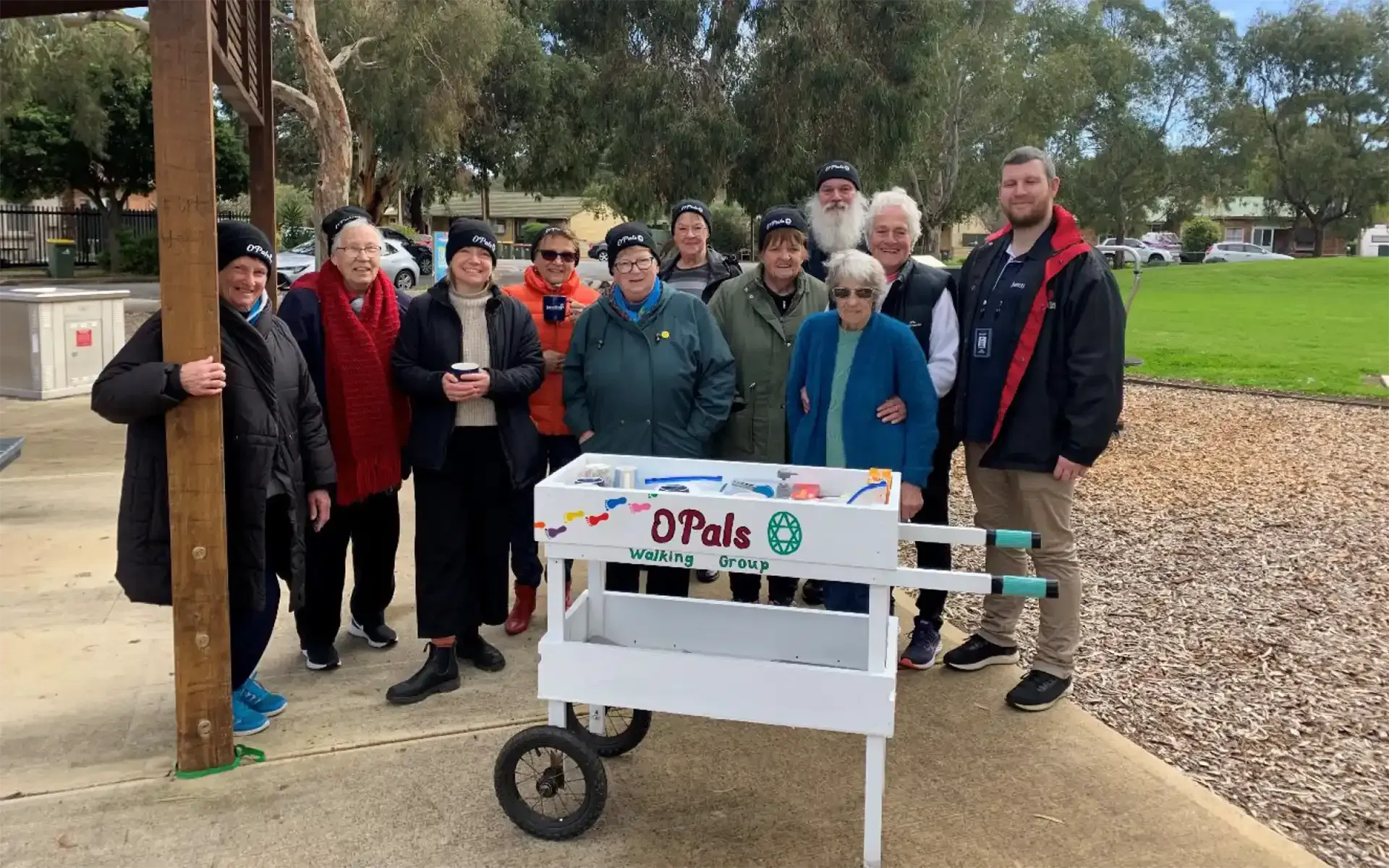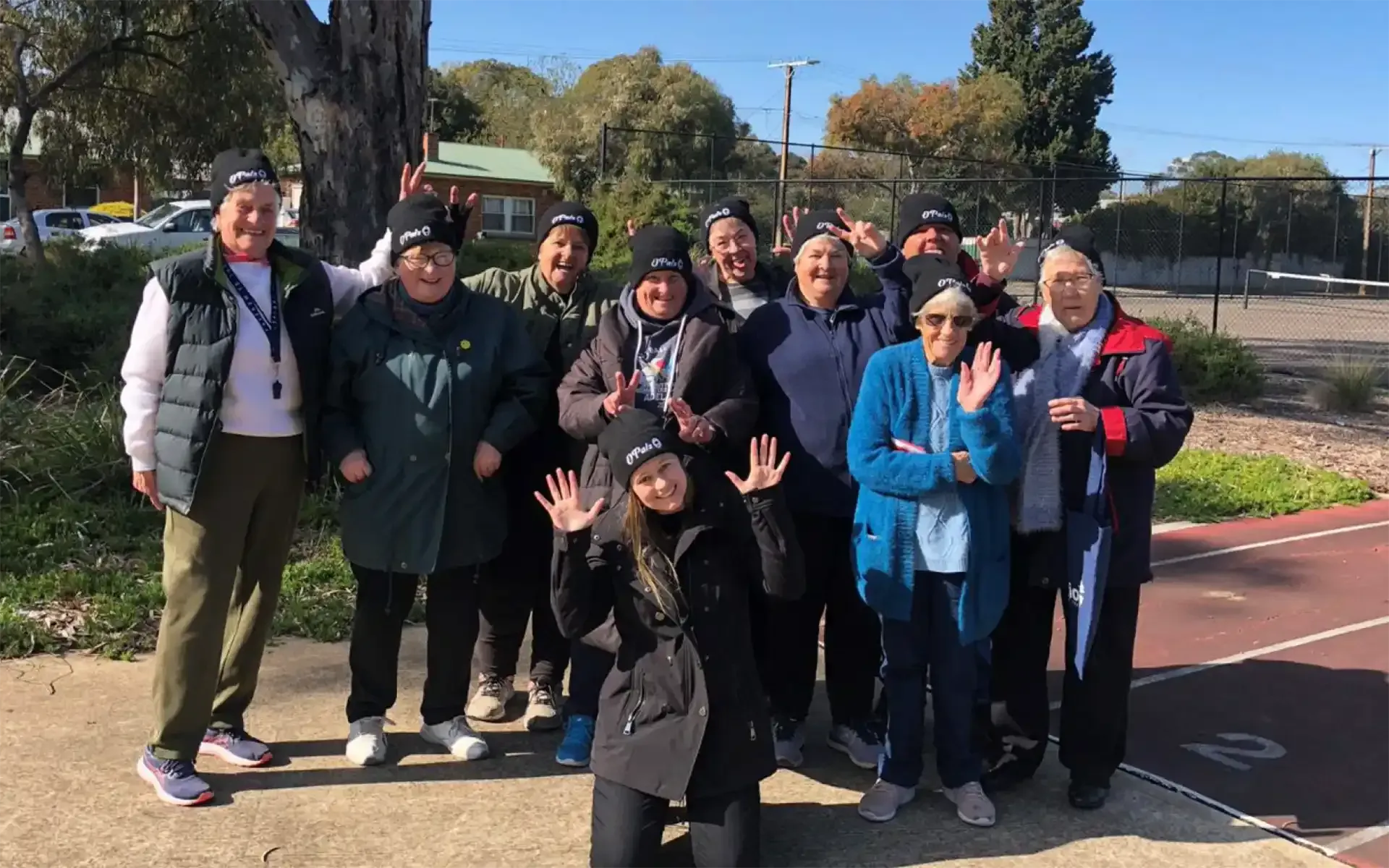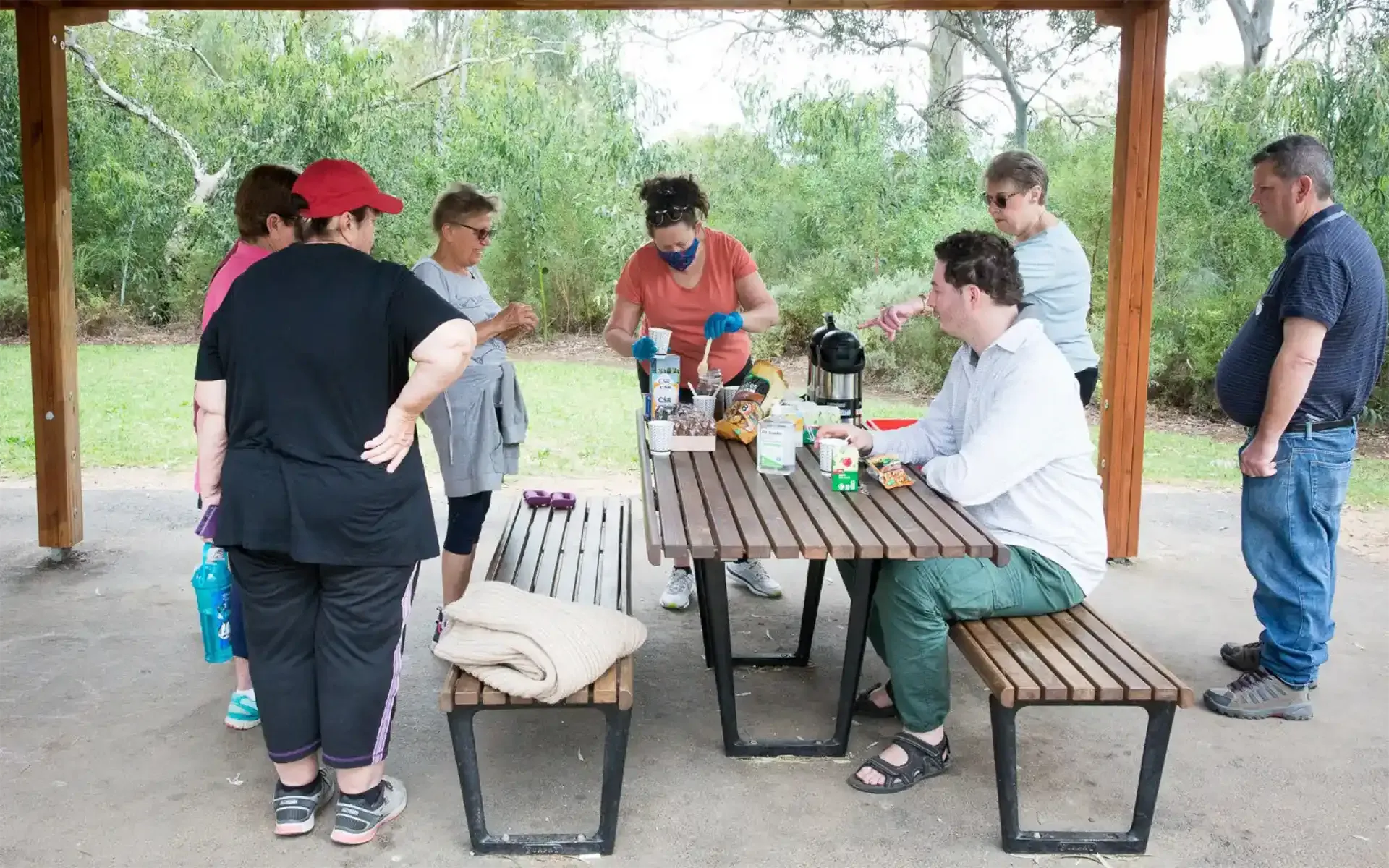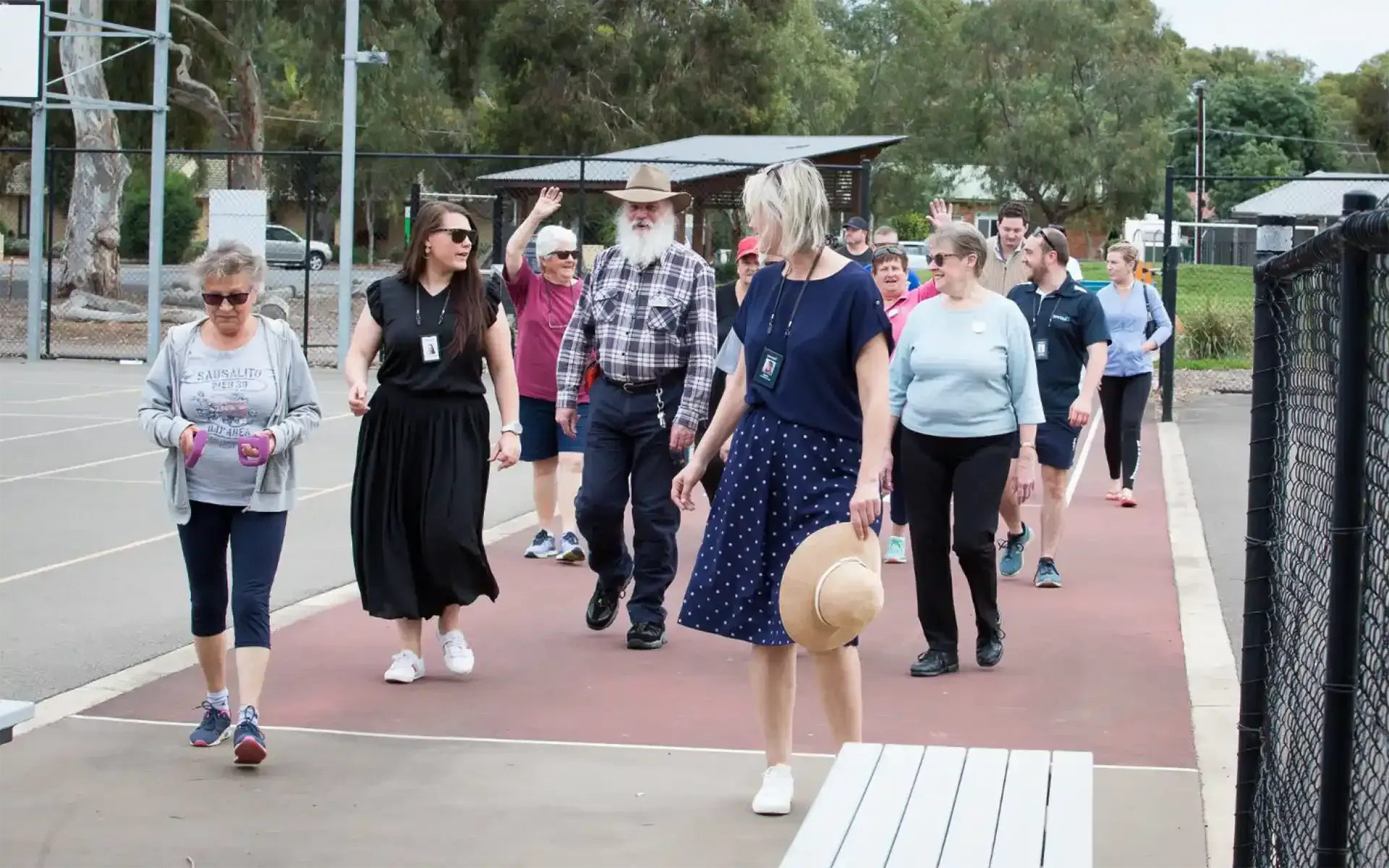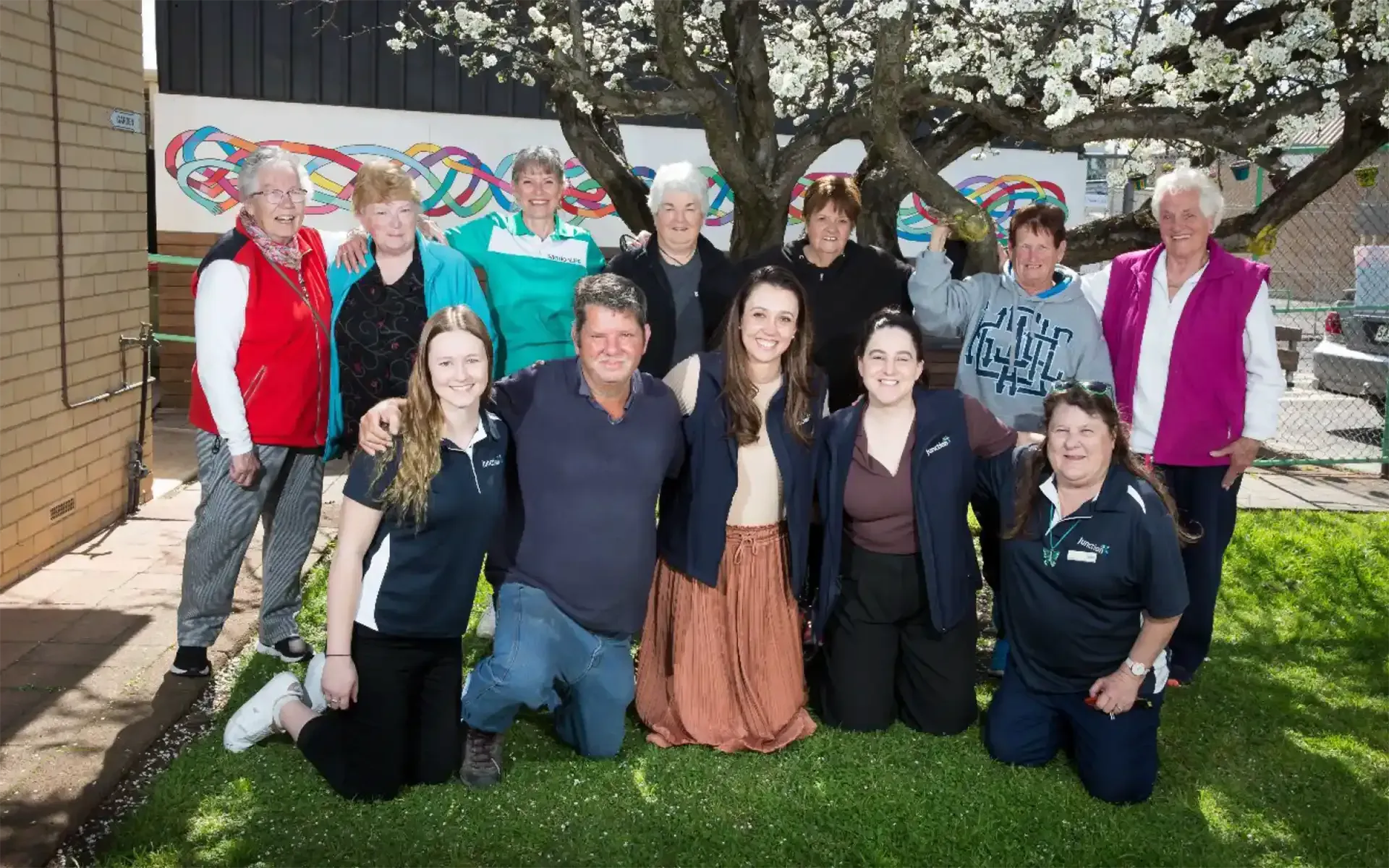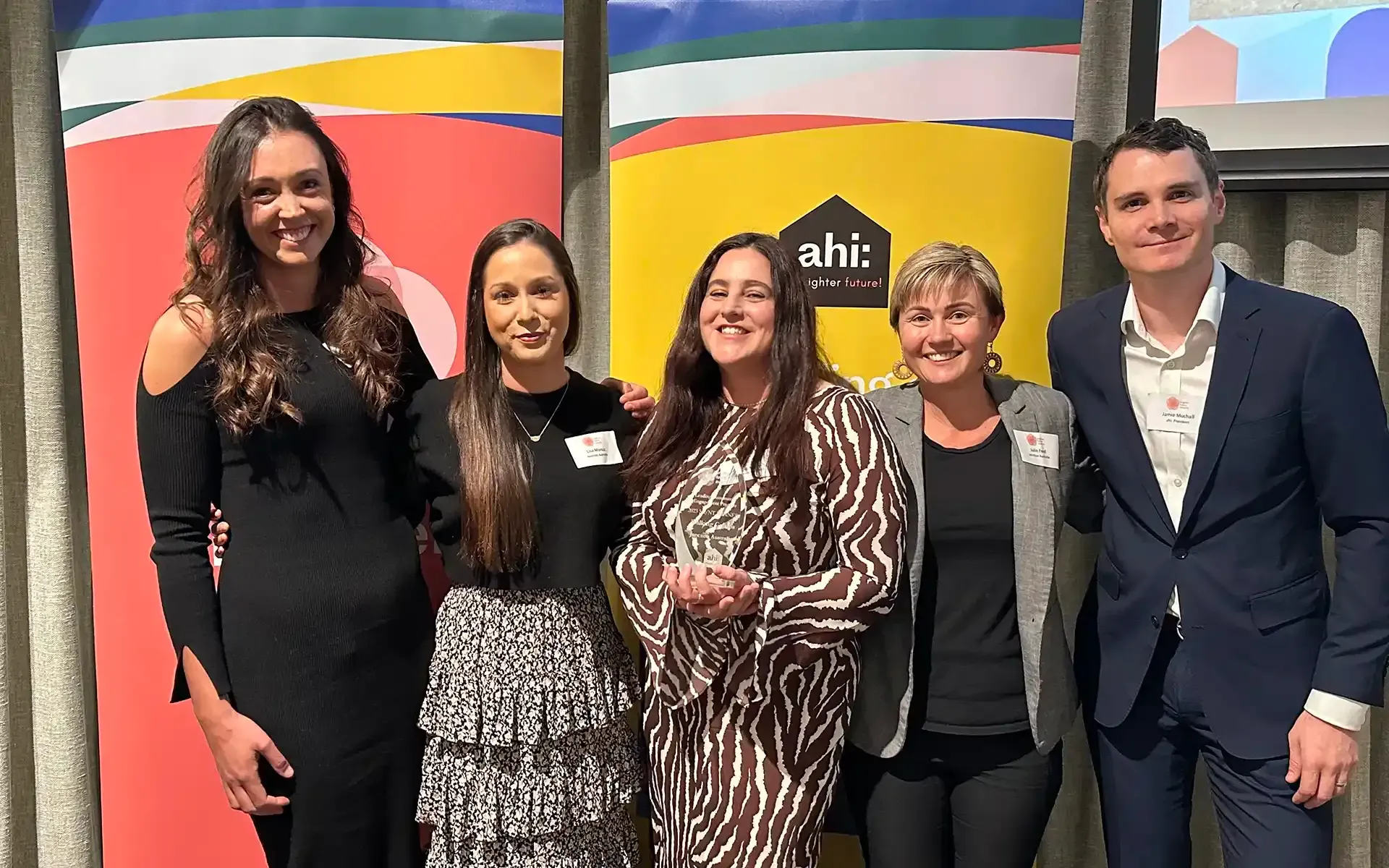Award-winning ideas come in different shapes and forms, but sometimes it's just a matter of putting one foot in front of the other. That's what Junction found, as Julie Ford and Tess Sharp explain. Hop to it, folks!
Fitness fads come and go (aerobics, anyone?), but walking has stood the test of time. Not only is Shanks’ pony one of the least stressful ways to stay active and keep in shape; it’s also great for getting out of the house, connecting with your environment and the wider community, and seeing what's around you in a different way.
Junction Walking Group—winner of the Leading Community Engagement gong at the ahi SA/NT Brighter Future awards in 2023—is proof the simplest initiatives can have an extraordinary impact and the greatest mileage.
In explaining the group’s origins, Julie Ford and Tess Sharp from Junction agree, perhaps the most pleasing aspect of the award win lays in the way the group evolved as a tenant-inspired idea in collaboration with the community housing provider.
Originally formed at Oaklands Park in Adelaide’s southern suburbs in 2020, the group's growth has been steady and consistent, continuing to grow to this day.
"One of the ladies, who still walks every week, would just go walking by herself every day,” Tess says. “Every morning, she was out walking around, and she was very good at keeping tabs on her neighbourhood. Then, just through casual conversations and working together, we suggested a walking group would be a good idea.”
“It’s grown organically from there, which has been the best way to do it. It's been extremely sustainable,” she continues. “It's not us coming in and going, ‘we're going to do this and come along with us'. It's really a collaboration, which has been the best part, and it's something [the participants] want to do. They more or less led it, and we just support it, which is amazing for everyone.”
While most of the pavement pounders are Junction tenants, members of the wider community can also take part.
“Random community members have come up to us and asked, 'what's this group we see each week?' Then we have a chat and find out they're living in the area too, and then we invite them to join in."
“It’s probably like other walking groups, but there’s a core of mainly ladies—and a few gentlemen—who show up every single week," adds Tess. "If one of them can't come, they'll work around it so other people can come. They really go out of their way each week to make sure that it goes on.
“It seems like a small thing, but I think it's special to have that reliability,” she continues. “We keep it quite casual. You don't have to register every week or let everyone know if you're coming, you can just rock up as you want to. But having that reliability that, unless it's pouring with rain or 45 degrees, 99% of the time there will be someone there to walk with you and have a chat.”
As well as its reliability, Julie and Tess say the group’s inclusivity and diversity are some of its other stand-out features.
“We've got young people, old people, people with disability, and people with mobility issues,” explains Julie. “All abilities are welcome, and all levels of disabilities are welcome. It’s such an inclusive environment.”
For many of the participants, it’s also much more than just a walk; it’s become an essential ingredient of their ongoing wellbeing. Tess recalls how joining the Walking Group became almost a lifeline for a man whose wife had passed away.
“He was incredibly isolated, unsure how to reconnect with others; and mentally, he was really struggling,” admits Tess. “He'd always had his hobby of model trains, but it's quite a stay-in-your-house kind of hobby, so he really didn't do much, and wasn't very confident in getting out and talking to people.”
See Junction's Walking Group featured as 'A Ray of Sunshine' on 7News:
Having the Walking Group has been a reliable social engagement, and, in many ways, a lifeline for getting him back into the community: “If he's not there, someone from the group will call him. Or if he's running a bit late, then he'll text them. Everyone kind of keeps tabs on each other, and I think it's been extremely helpful for people like him."
Julie cites another example—a young woman who had been struggling with isolation: "She wasn’t one of the founding members but, over time, she began joining the walks. Now, she never misses a Wednesday."
"She’s built connections, she’s made friends and regained confidence, and even shed a few kilos," continues Julie. "If she doesn’t show up, someone checks in on her. That sense of support has been transformative and, from a holistic wellbeing perspective, it's been marvellous for her.”
The group's culture has impacted enormously on members who might be low on confidence, struggling with mental health challenges and, in one instance, coping with neurodiversity. This young man, with severe autism, really wanted to take part but held back from getting involved because he wasn’t sure how to relate to people. As much as this was a challenge for him, it also presented an important opportunity to the wider group to learn more about neurodiversity.
“In the beginning, he didn't quite know how to relate to some of the people, and they were wanting to connect with him, but not quite sure how to do that either,” says Tess. "But the persistence on both sides of the fence to stay in contact and encouraging him to stay involved has paid significant dividends."
“Group members would call him to see where he was and invite him out for a cup of tea. Now, he's happily chit-chatting away, coming out to talk, and it's quite an incredible difference. It's something seemingly quite small—someone saying, ‘come out and just have a cup of tea, even if you don't walk'—but it's proven to be a really special thing.”
While the benefits of movement are undeniable, the lure of the post-walk cup of tea or coffee shouldn’t be underestimated; nor should the chance to nibble on some home-baked cakes and biscuits! There are anywhere between 12 to 15 people doing the actual walking, but the numbers seem to swell at a small park afterwards.
As Julie explains. “We go to this little park area at the end of the walk. A few extras might pop in because they see the group coming back and reforming, and they just come over for a cuppa and a biscuit and piece of cake and whatever."
“There are a few older ladies that have some health issues, so can't necessarily walk as well, but they still make that effort to come out for the morning tea. There was a lady living right across the road from where we have morning tea, and someone would always go get her after we come back from the walk, pull her out for a cup of tea and get her out of the house to say hello to people.”
Julie says the team at Junction is happy to help with supplying Coles vouchers for the morning tea costs: “The group wanted to take ownership of the morning tea—getting biscuits, cake, tea, coffee, bits and pieces—but then we started giving them Coles vouchers so they can bake, cook, do whatever for the morning tea."
“You get some good recipes as well,” laughs Tess. “And, if you ever want any low-cost baking tips, they're the best group for it.”
While simple initiatives, like walking groups, don’t generate the headlines that major social initiatives do, their impact is just as significant. Junction’s Walking Group is a living example of reliability, inclusivity and grassroots spirit, just as much as the physical exercise, the friendships, the cups of tea shared and the sense of belonging that keeps people coming back week after week.
As Julie concludes, “It's contributed to everyone, particularly those ageing tenants. The walking has contributed to their good health. They still have some health conditions—at that age, it's part and parcel—but I think it’s certainly helped them as well."
The ahi Brighter Future Awards 2025 are now underway! Visit
https://www.theahi.com.au/brighter-future-awards
to find out more.
Share This Article
Other articles you may like
